Developing a new Parkinson’s service delivering home-based care. Using new technology the service will help Parkinson’s patients, carers and healthcare staff monitor a person’s condition remotely – ensuring care remains person-centred. This enables them to ask for contact and review at times they need it, removing the need for time-locked clinic reviews that fail to meet the needs of patients and carers, and contributes to staff stress.
Funded by : The Health Foundation, Parkinson’s UK
Partners: Sheffield Hallam University, University Hospitals Plymouth NHS Foundation Trust, People living with Parkinson’s disease and their family’s/carers
Project Team: Joe Langley, Rebecca Partridge, Ursula Ankeny
Background
This project follows on from the previous project with Parkinson’s services in the South West Peninsula. These workshops uncovered issues in the way the service is currently run, with time-locked clinics, cancelled and delayed specialist appointments, vacant staff spots and arduous journeys to clinics for patient and carer.

Lack of clinic capacity results in limited ability to see those who require urgent review. Even when clinic review is timely and appropriate, the evaluation only captures how the patient is within those few minutes, and is otherwise dependent on patient recall, which can lead to erroneous assessment and inappropriate interventions. This sub-optimal provision of care contributes to staff dissatisfaction, stress and poor retention, which is a cause of significant threat to Parkinson’s service resilience nationally, with 50% of PDNS vacant posts being due to long-term sick leave or resignation.
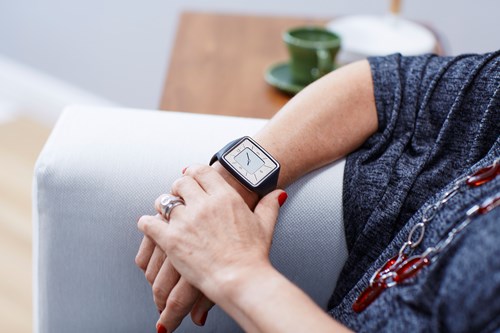
This project seeks to develop a new service that monitors symptoms on a monthly basis. It will use a Parkinson’s Kinetigraph (PKG®) a wrist worn, watch style device to monitor motor symptoms and a series of questionnaires for non-motor symptoms. Through this system patients will only need to attend a clinic when required and instead will be supported to self-manage minor changes and fluctuations supported remotely.
Through a series of workshops and prototypes, our role within the project has been to help the team develop the new service pathway, understand users’ needs and then co-design a series of training, support and learning resources with staff and patients. These will provide support information on the new pathway and signpost to self-management resources.
Methods
There were four workshops in total, with the final one being the launch event. Multiple iterations were co-designed during the workshop, and then further developed between these workshops, folding in the learning from participants at each stage. Each workshop focused on a specific aspect:
- Workshop one: discovering stresses, resources and needs, infrastructure/system mapping and pathway mapping
- Workshop two: developing training packages, exploring technology use/ misuse, stress testing the pathway with different patients and timings and expectation management
- Workshop three: understanding roles and responsibilities within the pathway and co-designing the resource pack contents
- Workshop four was the launch event introducing the pathway and resource packs
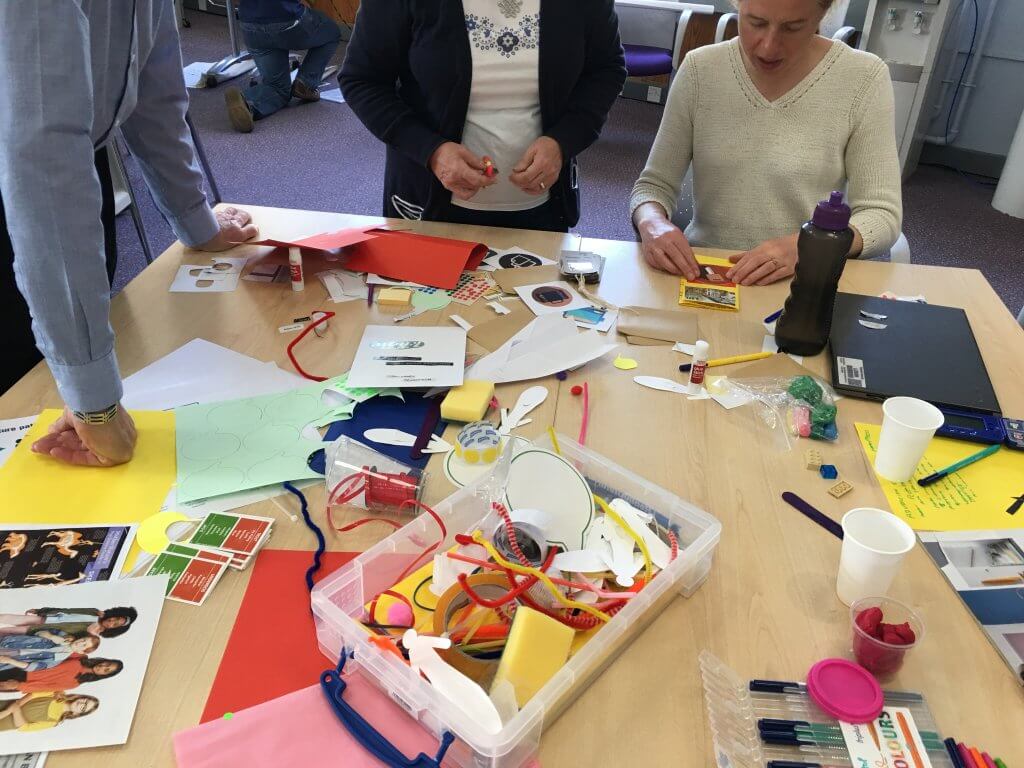
Key insights revolved around ensuring the pathway was clear and easy to use, and that patients felt supported throughout. This highlighted the need for sufficient training before starting the pathway, so that patients were clear when to self-manage and when to make a healthcare contact. Participants also highlighted the desire to keep track of their own symptoms in a manageable way so that they could know if a symptom was gradually deteriorating. Between these workshops, we developed elements of the pathway and resource pack to enable co-design during the sessions. We then fed in the learning from these sessions to alter and improve the pathway and resources.
Methods: COVID Adaptation
COVID-19 meant we could no longer hold face-to-face workshops to collectively evaluate and further develop the pathway and resource packs. In response to these issues, we shifted the methods of engagement to include virtual and posted formats (see Co-design during COVID for more information). During this time, we continued a process of iterative development, folding in patients feedback (through COVID adapted methods). These methods included:
- Telephone Interviews to evaluate the pack iterations across multiple criteria. These were led by our partners at Plymouth University, and consisted of discussing each element of the resource pack and ranking it in terms of how helpful, useful and easy to use they were. Overall patients really enjoyed using the pack, citing it as useful or very useful. The most useful resource was the tracking cards, that enable patients to track a symptom over a period of time using a heat map, allowing them to be more in control of their Parkinson’s. It was felt that there was too much content in the pack and a way to tailor to each person could be of benefit.
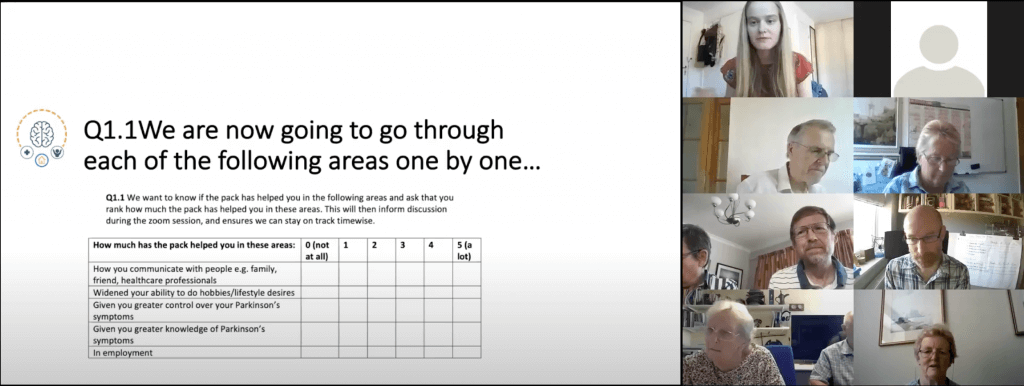
- Online Evaluation Workshop with people living with Parkinson’s and their carers. Participants were sent a ‘pre-zoom invite’ to prepare them for the session. This worked well and allowed a deeper evaluation of the resource pack, leaving space for more in depth discussions. The participants felt the resources had significantly helped in multiple areas of their lives such as everyday activities and in giving greater control over Parkinson’s symptoms. It became clear that each participant used the resource pack in a slightly different way and therefore preferred some resources more than others. Enabling participants to use the pack in their own way was crucial to successful engagement.
- Posted Evaluation Activity Book for participants to input on the next iteration of packs. These questions focused on accessibility, usability and potential ways in which the pack could be streamlined, responding to earlier comments that the pack was potentially too overwhelming with the amount of content. This is currently under development with our partners to be potentially used at a later evaluation stage.
Outcomes
Outcomes consisted of the Home Based Care Pathway and a resource pack which supports effective use of the pathway. Further resources were provided in the form of short films to describe the Home Based Care Pathway resources to patients and their families.
The Pathway
This first short film, created by Sarah Smizz, is also available to participants and explains how the Home Based Care Pathway works:
The project initially recruited 120 patients onto the pathway and was well received by those who were using it.
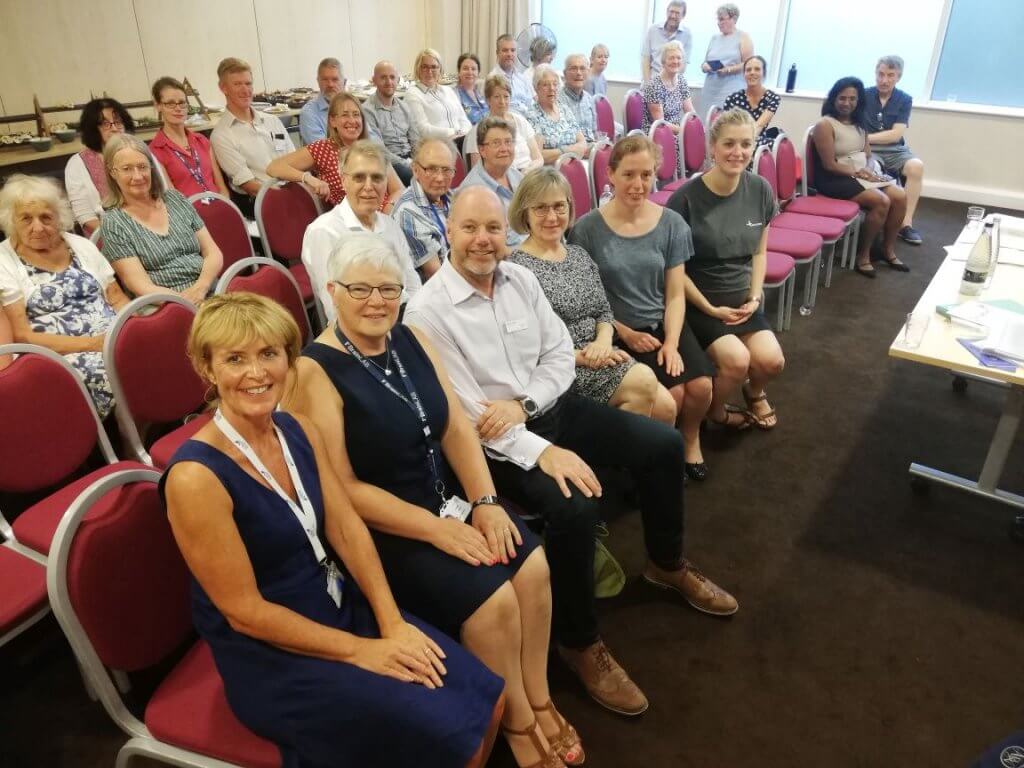
Resource Pack
The final resource pack consists of:
- Quick user guide on how the pathway works and how to use the resources
- Books detailing pathway information, support information and a list of Parkinson’s trained exercise providers in the South West Peninsula
- Tracking cards and heat maps to keep track of specific symptoms and therefore stay on top of whether they are deteriorating and therefore the need to trigger a healthcare contact
- Parkinson’s disease: An introductory guide, developed in Canada, it provides an overview of Parkinson’s and information on how to self-manage motor and non-motor symptoms
- Extra resources in the form of a wallet sized ‘passport’ that provides a summary of key information in relation to that individuals Parkinson’s and a wallet-sized Emergency card with a list of medications and emergency contacts

This second film, created by Sarah Smizz, describes the different components in the resource pack and how to use them:
Impact
The pathway has now recruited 146 people with Parkinson’s to date with a further 200 packs being created for new participants. The feedback so far has been hugely positive, with 75% of users finding it useful or very useful overall with users citing the heat maps and tracking cards as particularly useful for tracking symptoms over time as they act as a good reminder of where you have been as well. The pack was seen as very easy to use with 100% of users finding the resources easy to read and 92% finding it easy to understand.
“Helped me understand Parkinon’s a lot more”
Person with Parkinson’s enrolled on the pathway
Participants had previously flagged that there was a lot of information in the packs that might not necessarily be applicable to all. The team reduced elements in response, but when talking with participants, it became clear that whilst not everything worked for everyone, people were naturally curating their own packs as a result, based on what resources they felt they needed. Which also helped to give them more control over their own condition management. This was particularly true with the passport, which some participants found really beneficial as enabled them to have conversations about how their Parkinson’s affected them with other audiences such as work.
“It empowers you… to dig in a bit more”
Person with Parkinson’s enrolled on the pathway
Awards & News
- The project has been highly commended in the digital innovation category for the BMJ Awards 2021
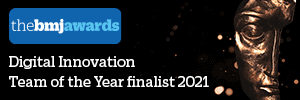
- The project has also been shortlisted for the Service Innovation for the Excellence Network Awards
Further news and publications in relation to the project are shown below:
- Langley J, Ankeny U, Partridge R, Wheeler G, Carroll C. ‘Co-designing resources for knowledge based self-reflection for people living with Parkinson’s disease to better enable independent living’, IADE/UNIDCOM’s 10th International Conference Senses & Sensibility 2019: Lost in (G)localization, Lisbon, 27 Nov 2019 – 29 Nov 2019.
- https://www.bbc.co.uk/news/uk-england-devon-49075253
- www.shu.ac.uk/mediacentre/hallam-supports-revolutionary-parkinsons-care-project
 to top
to top
